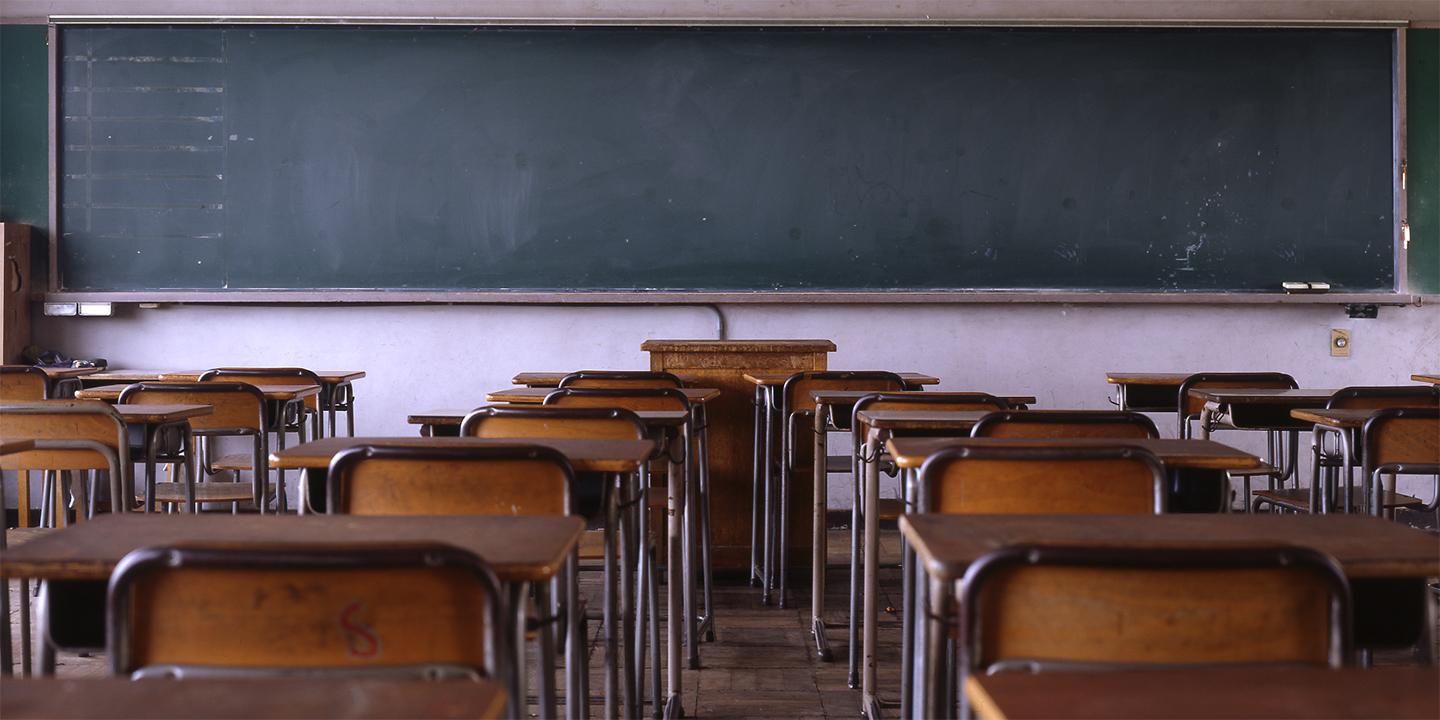Activities
Activity 1
Think of space and how this can be regarded as a visual text. Some of you may recall going to school and the classroom looking like this!

In Chapter 12 of the book, we encouraged you to think of ‘texts’ in a broad sense, to include photographs, clothing, the built environment, etc.
- What does this image ‘say’ to you about the pedagogy of this school? Are children expected to construct knowledge together alongside their teacher (as far as you can tell)? What evidence do you see in the picture to support your view? And as far as you can infer from this image, whose knowledge is privileged – that of the teacher or children?
- Now contrast this image with that of an early years classroom with which you are familiar. In what ways does it ‘speak’ to you about the pedagogy of the school or nursery? First of all, try to be specific about the room itself, the objects within it and their arrangement in relation to one another. Then look at the way the space is appropriated by children and adults.
Activity 2
Look at possible avenues for research using documents and visual texts. In Chapter 12 of the book, we noted that students are sometimes reluctant to explore documents and visual texts as a source of data in their research projects. Here are two examples which we think might be interesting avenues for student research:
- A content analysis examining the numbers of black, minority ethnic children or children with a disability represented in children’s television. You would have to define the parameters, such as a particular TV channel and the timings which you designate as the periods of observation, as well as whether you were going to include the advertisements between the TV programmes. You may want to include cartoons as well as programmes including real children or both, but you would need to be clear. In order for the analysis to be meaningful, you would need to watch a lot of children’s television – one or two nights would not be sufficient in terms of data gathering. You could then make a simple chart to fill in as you watched, recording some basic detail, such as who was represented (e.g. a child with down syndrome); what programme; date and time; role of character (e.g. main character in series or a very small part); and what the character was doing in the programme (e.g. breaking the ‘rules’ or going to school, etc.).
- An exploration of how children are represented in advertising campaigns for charitable organisations. You might want to concentrate on the advertisements (from a range of media) produced by a particular charity or perhaps a few which have a linked theme such as Save the Children and UNICEF. Again, you would need to define the parameters of your research clearly. You could think, for example, about how the representations sort and classify children and the purpose they serve.
